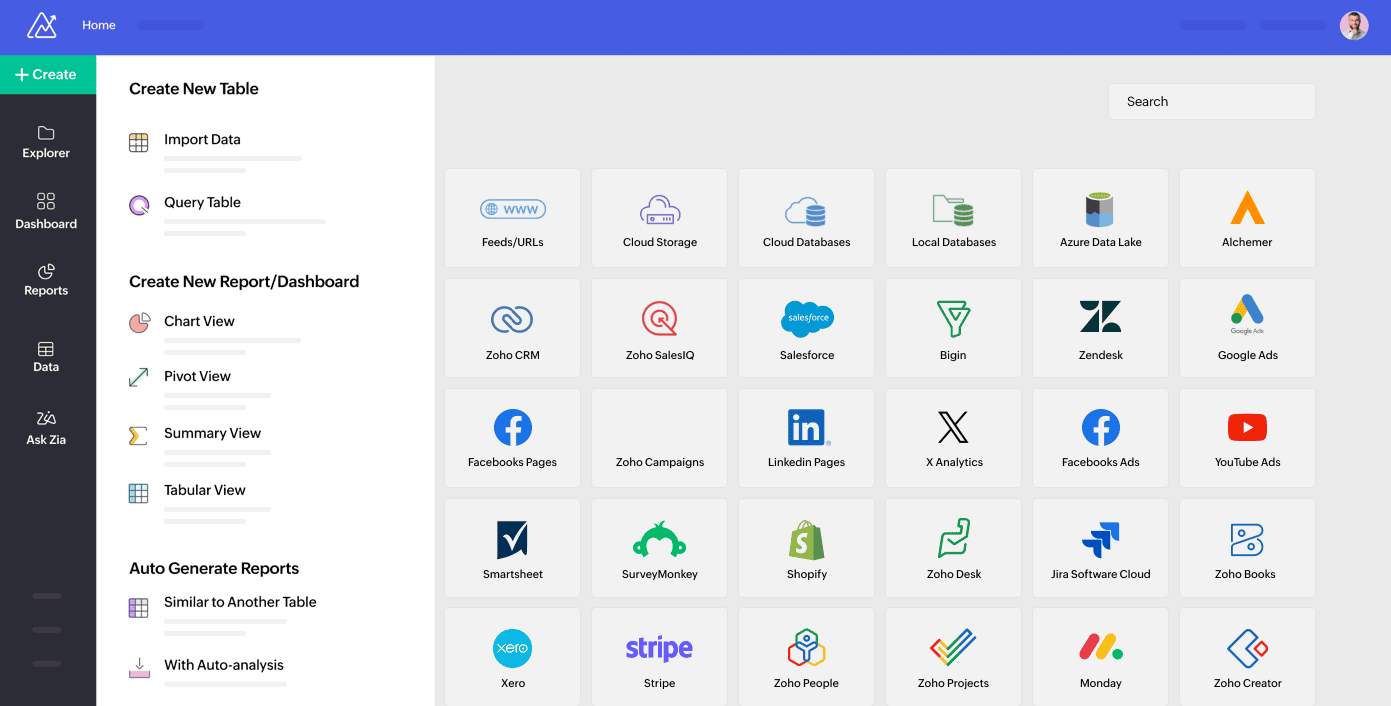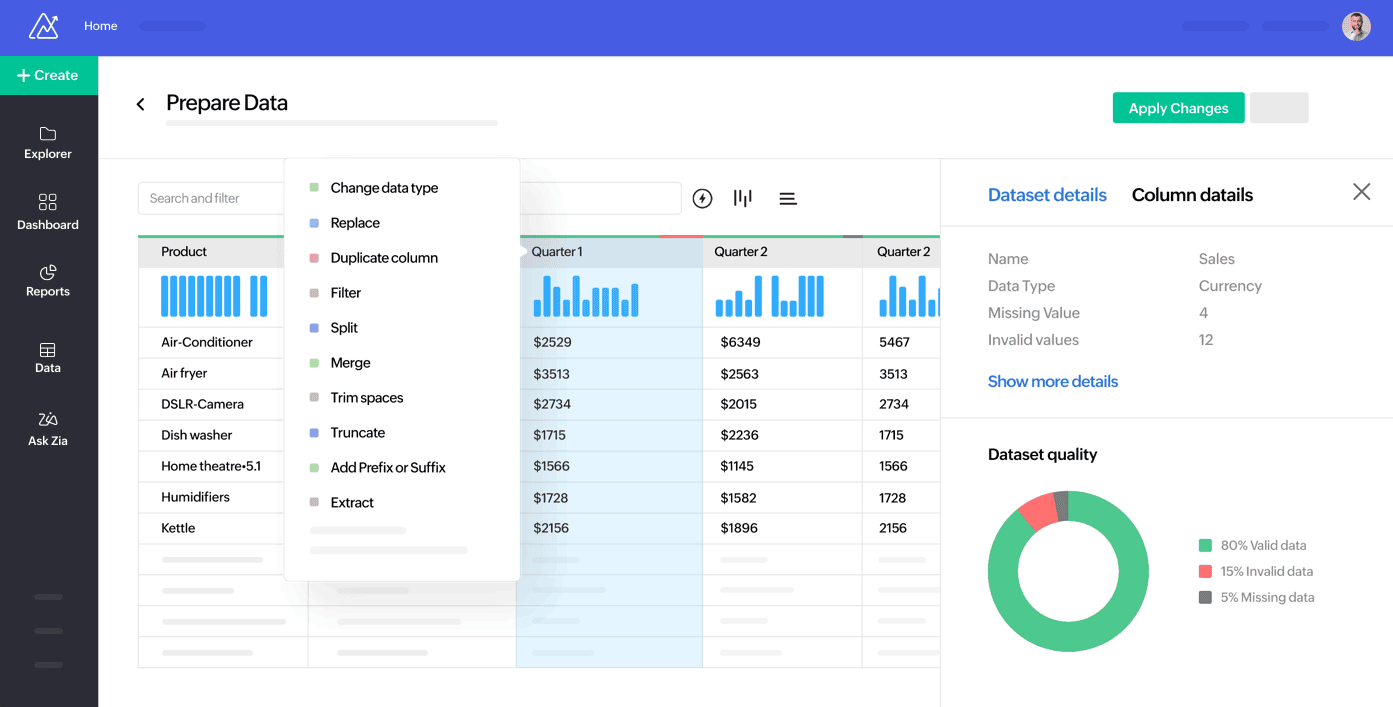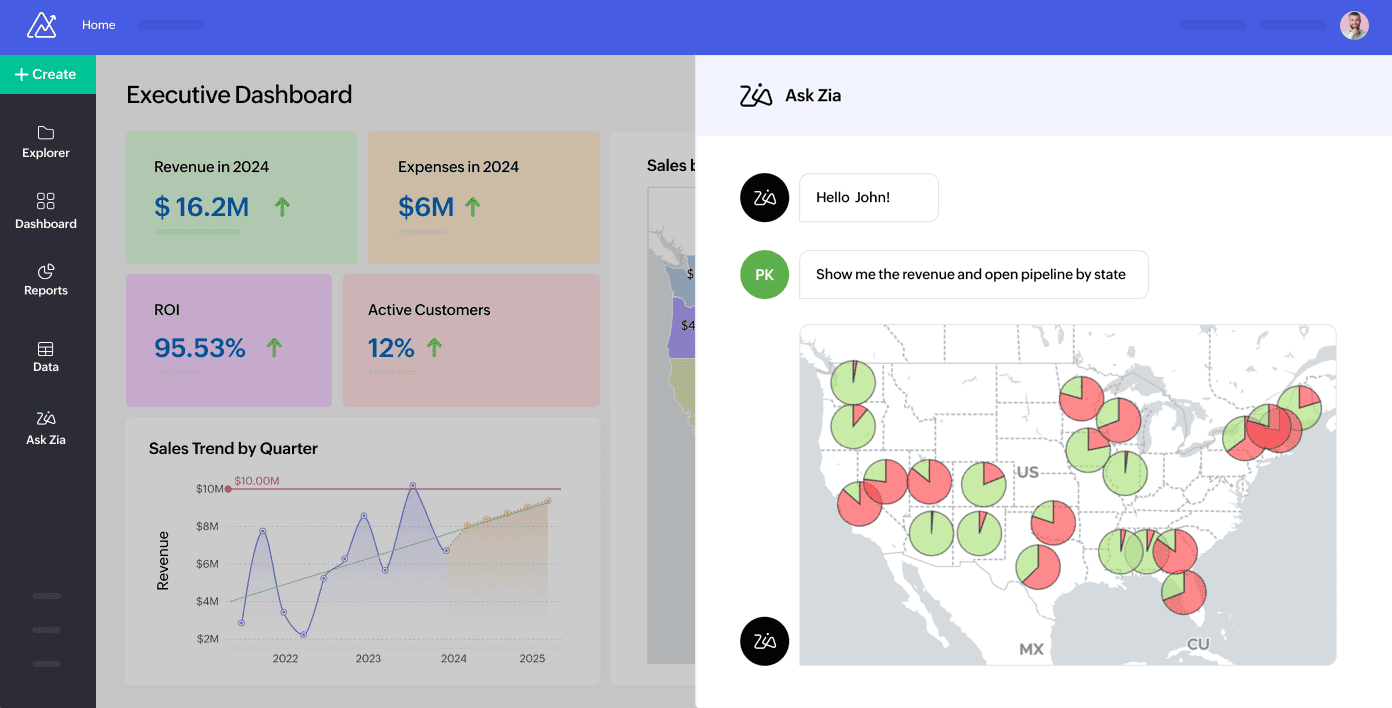Let’s be honest – most distributors in print and promo aren’t hurting for data. It’s all over the place: commonsku, CRM, spreadsheets, Google Analytics, QuickBooks... you get the idea. The real problem is making sense of it all. That’s where a Business Intelligence (BI) platform steps in and savvy distributors are picking Zoho Analytics as their BI platform of choice.
What is BI?
Why BI Matters for Print and Promo Distributors
- See everything in one place. Sales, customer activity, website data, financials – you can bring it all together. No more bouncing between apps or stitching together reports in Excel.
- Spot trends and plan ahead. Forecasting tools help you see where things are heading – so you can stock up before a rush or adjust before a slump.
- Custom dashboards for your team and even your clients. Everyone from sales to ops can get a real-time view tailored to their job. When it comes to your customers, dashboards provide an incredible value add to savvy buyers who desire measurable success.
Why We Like Zoho Analytics
There are plenty of BI platforms out there, but Zoho Analytics hits the sweet spot: it’s powerful, but still approachable for non-tech folks. Here’s what makes it stand out:
1. Data Blending Without the Headache

2. Dashboards That Make Sense

3. Forecasting That’s Actually Useful
4. Clean Data, Less Manual Work

5. AI That Doesn’t Feel Gimmicky



